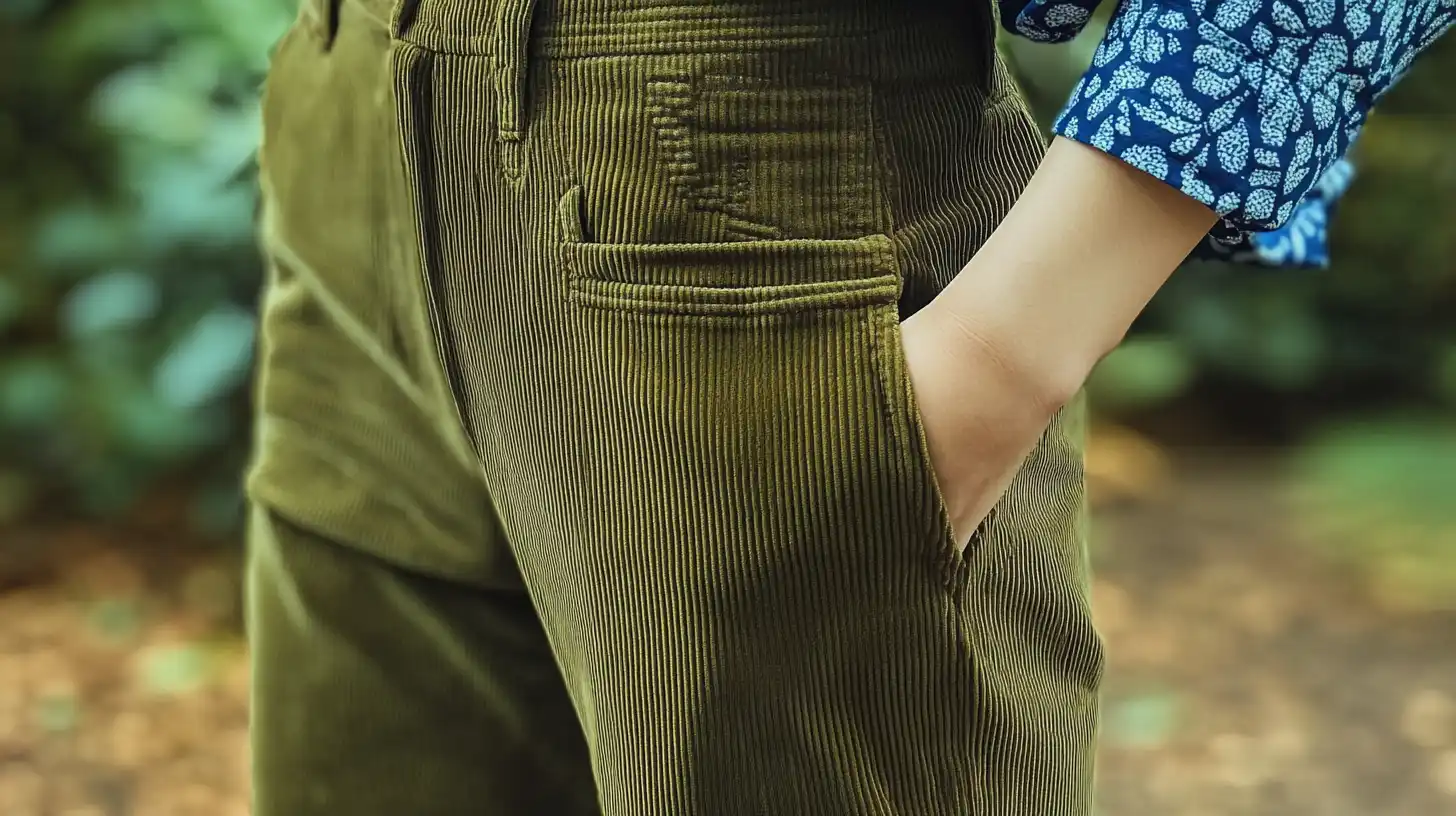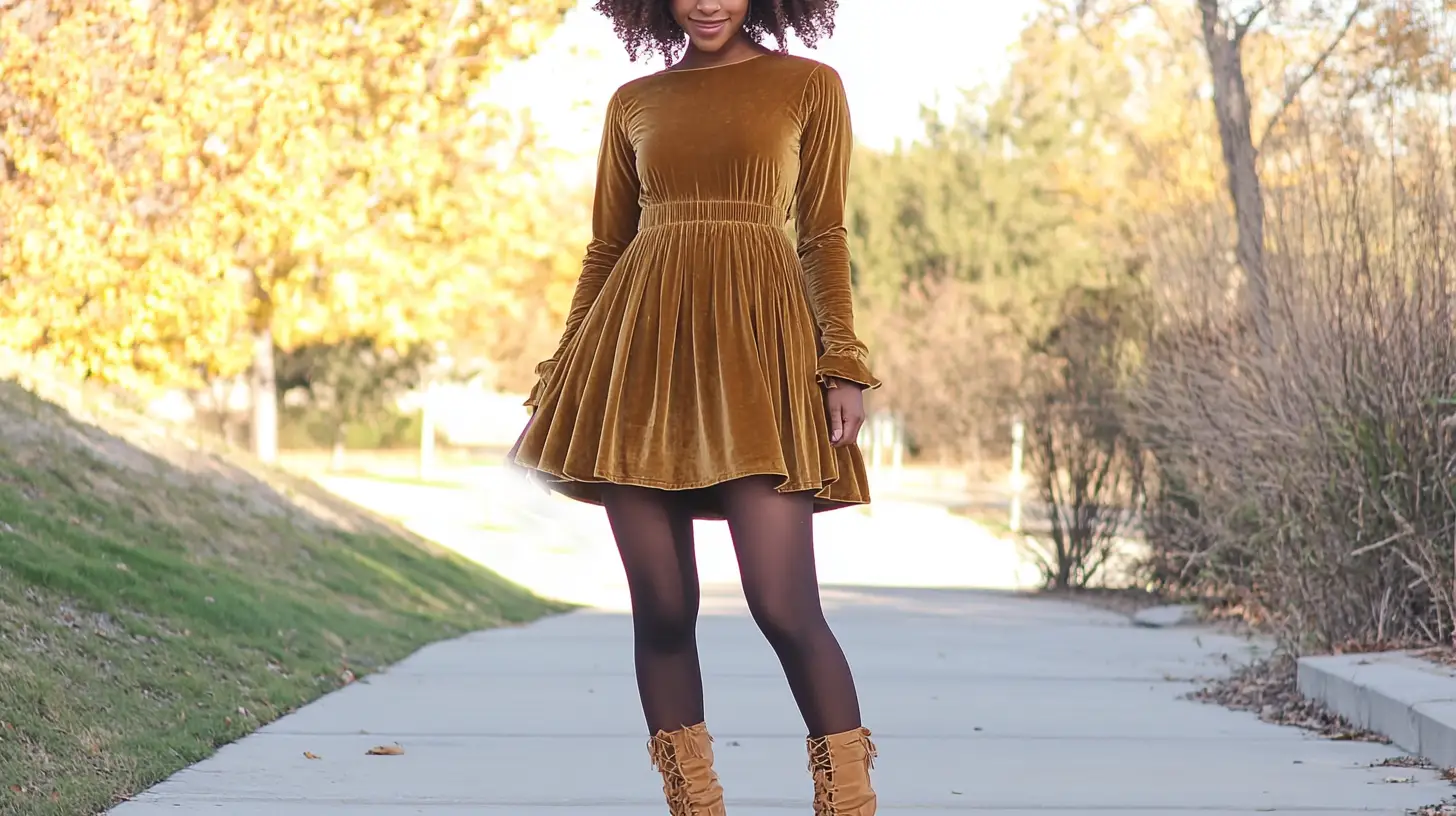Are you ready to embark on a creative journey that will elevate your sewing skills to new heights? Sewing with corduroy is not just a delightful challenge. It’s an opportunity to craft unique, textured pieces that exude warmth and personality.
This versatile fabric, with its rich colors and soft ridges, invites you to explore endless possibilities, from cozy jackets to chic bags. So grab your sewing machine and let your imagination run wild! It's time to transform that corduroy into stunning creations that will showcase your talent and passion!
Key Takeaways
- Pre-wash corduroy to avoid shrinkage and color bleeding before sewing.
- Use sharp scissors and tailor's chalk for precise cutting, aligning the grainline with the wales.
- Employ a walking foot and universal needles sized 90 or 100 to manage fabric layers and thickness.
- Press seams gently with a pressing cloth to maintain the fabric's nap and texture.
- Finish raw edges with a zigzag stitch or serger to prevent fraying.
Understanding Corduroy Fabric

To understand corduroy, you need to know its composition, unique characteristics, and common types.
Composition and Characteristics
Understanding corduroy begins with recognizing its distinctive ribbed texture, known as "wales."
This napped fabric can range from 3 to 23 wales per inch, offering various types, such as wide, regular, or pinwale corduroy.
Typically made from 100% cotton, corduroy can also include polyester for durability.
Its construction often features a twill weave, enhancing its sturdiness and versatility.
Different Types of Corduroy
When diving into the world of corduroy, you'll find it's categorized by the number of wales per inch, which significantly impacts its applications.
Pinwale corduroy, with 16-23 wales, suits lightweight garments like shirts.
Wide-wale, featuring 3-8 wales, is ideal for heavy outerwear.
Needlecord offers a softer drape for dresses, while medium-weight cotton corduroy is versatile for various projects.
Popular Projects for Corduroy Fabric
Crafting with corduroy opens up a world of versatile and stylish projects.
- Clothing: Jackets, pants, skirts, and overalls.
- Home Decor: Cushion covers, throw pillows, and curtains.
- Accessories: Tote bags, hats, and shoes.
- Furniture Upholstery: Chairs, sofas, and ottomans.
- Quilting and Patchwork: Quilts and patchwork blankets.
- Children's Items: Soft toys and kids' clothing.
- Craft Projects: Book covers and fabric art.
Preparations for Sewing with Corduroy
Before sewing with corduroy, you need to make some essential preparations.
Pre-wash and Shrink the Fabric
Pre-washing your corduroy fabric ensures your finished garment maintains its size and color.
To prevent shrinkage and color bleeding, wash in cold or warm water with a gentle detergent. Avoid overloading the washing machine to preserve the fabric's texture.
Tumble dry for 5-10 minutes, then lay flat to air dry. Testing a swatch beforehand is wise.
Cut the Fabric
To ensure a successful sewing project with corduroy, you must meticulously prepare the fabric before cutting. Iron the fabric to prevent distortion.
Determine the nap direction by running your hand over it, and cut with the nap facing upward. Align your pattern pieces with the wales, using tailor's chalk for precision.
Lay all pattern pieces in the same direction for consistency.
Gather Essential Tools and Materials
When sewing with corduroy, you'll need specific tools and materials to ensure success.
- Use a universal needle size of 90/14 or 100/16.
- Use strong polyester thread for durability. Or use heavier thread for topstitching to add visual interest and strength.
- Use sharp fabric scissors or a rotary cutter for clean edges.
- Use weights instead of pins to prevent fabric distortion.
- Use tailor's chalk or fabric markers for marking lines and notches without damaging the fabric.
- A walking foot prevents shifting.
Tips for Sewing with Corduroy

With all the preparations, let's learn to sew with corduroy.
Adjust the Stitch Length
To achieve the best results when sewing with corduroy, adjusting the stitch length is crucial.
Use a longer stitch length, around 3.0 to 3.5 mm, to prevent puckering and ensure smooth feeding. For seams needing stretch, opt for a zigzag stitch.
If you're using a walking foot, increase the stitch length slightly to maintain even tension and reduce shifting.
Always test on a scrap first.
Handle Bulkiness and Thickness
Dealing with the bulkiness and thickness of corduroy can seem daunting. But with the right techniques, you can achieve professional results.
Use a walking foot to help evenly feed the layers while sewing. Trim and grade seam allowances to minimize bulk.
Opt for flat-felled seams or zigzag finishes instead of French seams. To reduce the thickness of the topstitching, shave off some wales.
Avoid Shifting and Slipping
Sewing with corduroy presents unique challenges, particularly when avoiding shifting and slipping.
Start by cutting out corduroy with the nap facing down. Avoid pressing too hard to prevent crushing the nap.
Use a walking foot to grip fabric layers, and hand basting seams helps secure them.
Pin perpendicular to seams or use weights to reduce fabric slipping.
Pressing and Ironing Tips
Use a pressing cloth to avoid crushing the wales and apply steam without direct contact.
Always press seam allowances with fabric wrong sides together to maintain the fabric's structure.
Avoid excessive pressing and ensure the wales are aligned in the same direction. You can also only use the tip of the iron.
Special Considerations

When sewing with corduroy, there are some special considerations you need to consider.
Topstitching and Decorative Stitches
Topstitching on corduroy can dramatically enhance both the visual appeal and the structural integrity of your project.
Use a longer stitch length to accommodate the fabric's texture, and a walking foot to manage multiple layers. Align your topstitching with the ribs for consistency.
Experiment with decorative stitches and contrasting threads on scrap pieces to ensure compatibility and achieve the desired effect.
Lining and Interfacing Options
Wondering how to choose the right lining and interfacing for your corduroy project?
Opt for lightweight fabrics like cotton or rayon for linings to maintain structure without bulk.
Use fusible, lightweight interfacing for added stability without compromising corduroy's softness.
Always pre-wash linings and interfacings to prevent shrinkage discrepancies.
Avoid heavy interfacings to keep seams smooth and the garment's shape intact.
Hem Corduroy Garments
Hemming corduroy garments involves special considerations to ensure a professional finish without compromising the fabric's unique texture.
Use a hand-sewn invisible hem to avoid bulk and maintain the nap's integrity. Finish raw edges with a zigzag stitch or serger to prevent fraying.
Lightly press seams and align the hem with the wale direction for a polished look.
Common Problems and Solutions
When sewing with corduroy, you'll often encounter issues like fraying edges, managing bulk at seams, and pressing without damaging the fabric.
Fraying Edges
Corduroy edges are notoriously prone to fraying, which can compromise both the durability and aesthetics of your project.
To combat this, finish raw edges with a zigzag stitch or a serger. Using a walking foot helps manage layers and reduces shifting.
Apply fray check along the raw edges before sewing to seal the fibers and prevent fraying effectively.
Bulk Management
Managing bulk is crucial when sewing with corduroy, and a few smart techniques can make all the difference.
Use a walking foot to handle multiple layers evenly, preventing shifting. Trim and grade seam allowances to reduce thickness.
Shave off wales within the seam for less bulk. Topstitch seams for a flatter finish, and consider a zigzag stitch for flexibility.
How to Care for Sewn Corduroy Items
To keep your sewn corduroy items looking their best, always follow these care tips carefully.
Washing Instructions
Always wash corduroy garments inside out using a gentle detergent and cold water.
After washing, tumble dry on low heat for 5-10 minutes, then lay flat to air dry.
To remove wrinkles, steam them without direct contact.
Avoid bleach or harsh chemicals to preserve texture and color.
Storage Tips
Storing your corduroy garments properly ensures they remain in top condition.
To prevent creasing, store them flat or rolled. Opt for breathable garment bags for long-term storage to protect against dust and pests while allowing air circulation.
Keep your corduroy garments away from moisture and humidity to avoid mildew.
Avoid thin hangers; use padded or wide ones to maintain the fabric's shape.
Conclusion
Sewing with corduroy can be incredibly rewarding when you're well-prepared and use the right techniques. By understanding the fabric and using essential tools, you'll create beautiful, durable garments. Remember to pre-wash and align grainlines to avoid mishaps.
With a bit of attention to detail and care, you'll master the art of sewing with corduroy, producing pieces that are as stylish as they are cozy.
Learn more sewing tips on the Longancraft Blog, and dive into the fabric world with Longancraft!
FAQs
Is It Hard to Sew With Corduroy?
Sewing with corduroy isn't overly hard, but it does require specific techniques. Pay attention to the nap, use the right needle, and adjust your stitch length. With careful handling, you'll achieve professional-looking results.
What Stitch to Use for Corduroy?
For corduroy, use a zigzag stitch to accommodate its stretch and prevent fraying. A longer stitch length works best for topstitching. Avoid French seams due to bulkiness; opt for flat-felled seams or serged edges instead.
Do You Need a Special Needle to Sew Corduroy?
You don't need a special needle to sew corduroy, but you should use a universal needle sized 90 or 100. This helps handle the fabric's thickness and texture, ensuring smooth stitching without damaging the material.
What Can I Make With Corduroy Fabric?
You can create various items with corduroy fabric, like trousers, jackets, skirts, and shirts. It's also great for bags and pinafores. Choose your wale size carefully to match the casual or formal look you want.


0 comments